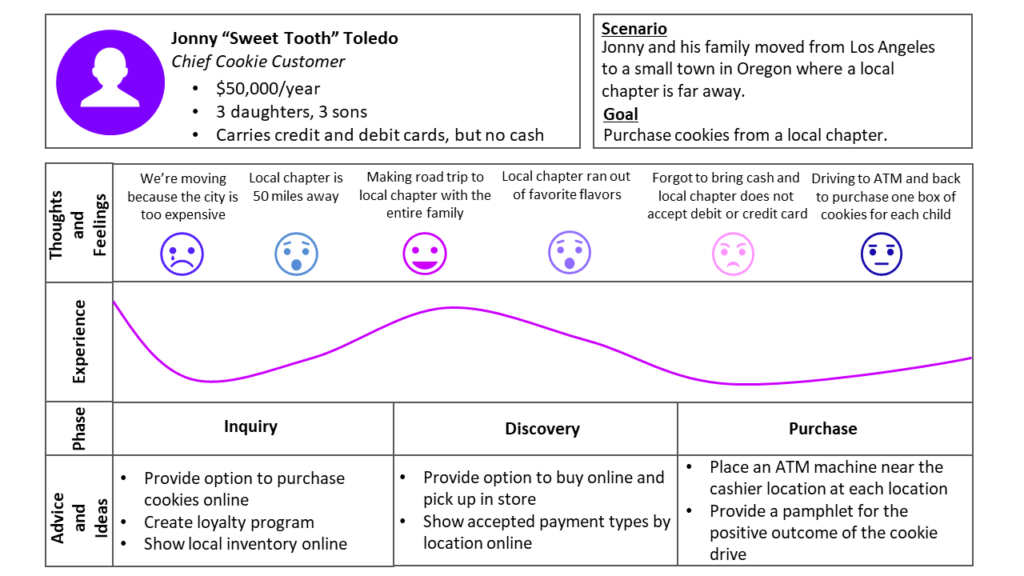Journey Mapping as a Useful Tool

Key Components of a Journey Map
Persona
Character: Capture all pertinent information for the subject in relation to the project (ex. name, family, income, etc.)
Scenario
Context: Detail the scenario with all known info including location and any action taking place
Goal
Goals: Clearly identify and capture the goal(s) from the user’s perspective
Thoughts and Feelings
Emotion: List thoughts and feelings experienced by customer, including emotion from issue and expected emotion from outcome
Phase
Stages: Record each process phase
Advice and Ideas
Solutions: Document any advice or ideas that would directly address the issues for each of the phases

How Do Your Goals Align with the Journey?
A strategy requires a goal. Think about your ecommerce website for a moment. Sure, you want to sell products, that’s easy. Do you have a newsletter sign-up? Do you offer a subscription model? A blog? How about a service portal? Financing? The list can get pretty long, and each one of those interactions has its own customer journey – whether you intentionally created one or not. You know the best way to identify them? Talk to your customers. If you don’t, you could end up with a strategy that closely resembles my style of chess. Your customers’ motivations and expectations will guide them, and your offering will either fit or it won’t. The unfortunate truth is that you may have the very best widget in the market, but if you make it too difficult to purchase, customers will go to your competitors. That empathy that I mentioned earlier? That’s what helps you understand your customers and deliver an experience that feels tailored to them.
Business Benefits of Journey Mapping
Journey mapping is customer-focused. It allows us to visually model our background systems against the user’s experience, highlighting how well our systems are (or are not) integrating. Journey maps also help us to:
- Remove underperforming and ineffective touchpoints
- Better forecast improvements
- Shift perspective to customer
- Assign ownership to phases ensuring proper accountability
The Map is Never Done
Like most worthwhile things in life, we get better the more we practice, and customer journey maps are no exception. They usually appear fairly simple, but as we talk with our internal team and our customers, we realize how complicated those journeys can be. Email marketing and social media campaigns can be important touchpoints, along with the blog on your website or even a call in to your service department. How do those pieces fit together? Most critically, how does your customer see those pieces fitting together? The better you can map these journeys, the better you can understand them and the more you can improve upon them.
Download a Journey Map Template in the Tools & Templates section of our website.
Learn more about understanding your stakeholders through Empathy Mapping.



